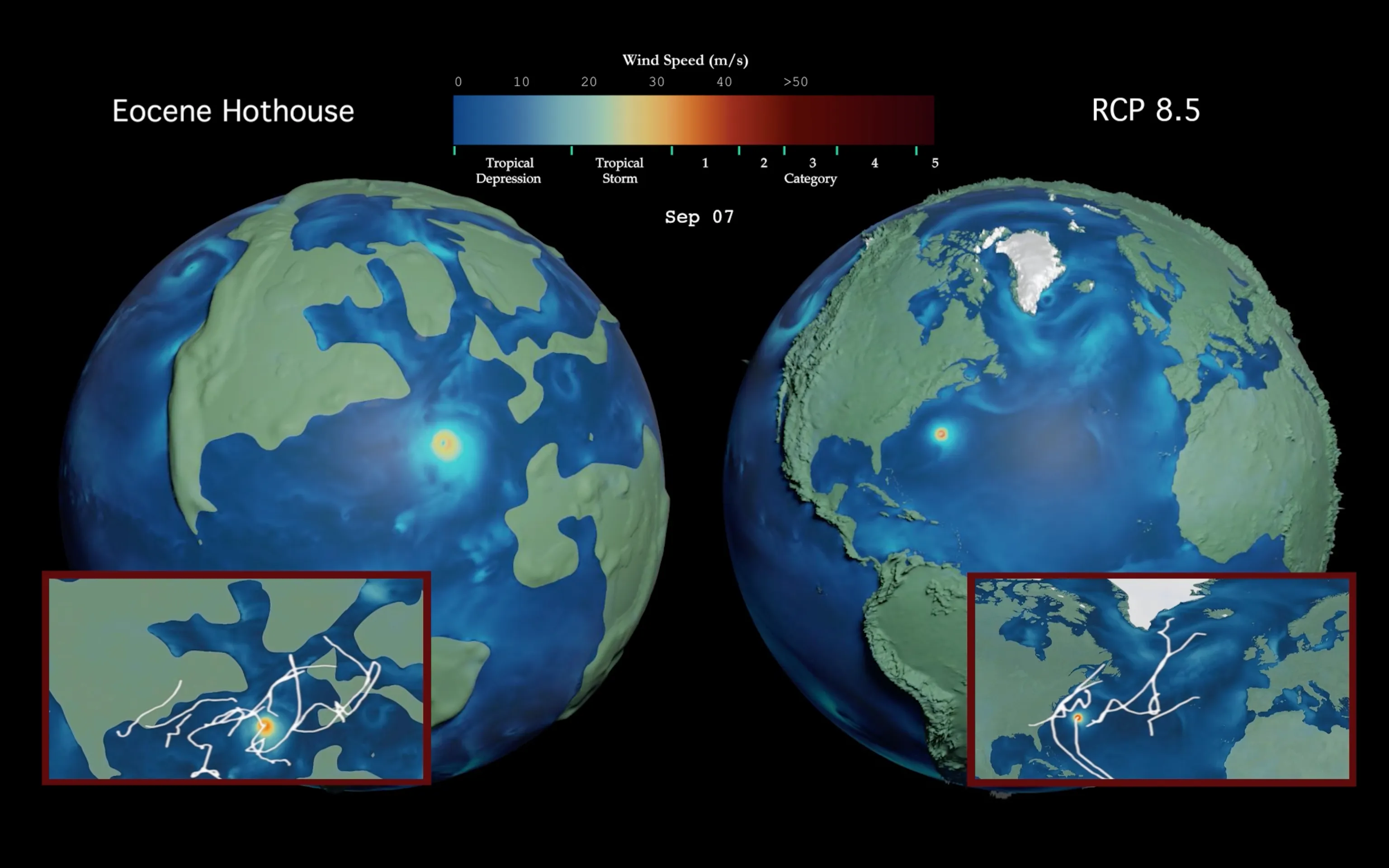
Extreme Weather Events Under a Wide Range of Climates in High-Resolution Coupled CESM
The paleoclimate Community Earth System Model simulations shown in this video were completed as part of the Accelerated Scientific Discovery (ASD) program, which provided a unique opportunity for large-scale computational projects to have nearly exclusive use of the new NSF NCAR high-performance computing system Derecho for a few months.
Project description:
We propose an unprecedented, landmark set of fully coupled high-resolution (HR) climate simulations for past greenhouse and icehouse climates to study the dynamics that govern the characteristics of extreme weather events in both atmosphere and ocean under altered climate states. We target well-studied paleoclimate intervals with higher and lower atmospheric CO2, including the Last Glacial Maximum, the Pliocene, and the Early Eocene. We employ scientifically validated and extensively tested CESM code and configuration, the iHESP high-resolution CESM1.3 (~0.25° atmosphere/land and ~0.1° ocean/sea ice) with water isotopes. The unique water isotope capability enables unprecedented integration of information from model and paleoclimate observational data.
References
Temperatures derived from benthic foraminifera: Westerhold et al. (2020), An astronomically dated record of Earth’s climate and its predictability over the last 66 million years. Science. DOI:10.1126/science.aba6853
HadCRUT4 historical temperatures: Morice, et al. (2012), Quantifying uncertainties in global and regional temperature change using an ensemble of observational estimates: The HadCRUT4 dataset, Journal of Geophysical Research, DOI:10.1029/2011JD017187
High-resolution CESM1.3 RCP8.5 simulation: Chang, et al. (2020). An unprecedented set of high-resolution earth system simulations for understanding multiscale interactions in climate variability and change. Journal of Advances in Modeling Earth Systems. DOI:10.1029/2020MS002298
Project Leads:
Bette Otto-Bliesner (NSF NCAR CGD)
Jessica Tierney (University of Arizona)
Project Contributors:
Jiang Zhu: Model development and testing; preindustrial and Eocene simulations; post-processing; visualization design
Ran Feng: Pliocene simulation; post-processing
Clay Tabor: Last Glacial Maximum simulation; post-processing
Jesse Nusbaumer: Model development
Jim Edwards: Model porting and engineering support
Esther Brady: Simulation setup; visualization design
Sophia Macarewich: Data management; visualization design
Cheyenne, NWSC
Matt Rehme (NSF NCAR CISL)
Special thanks to: Nihanth Cherukuru and Tammy Zhang
Blender